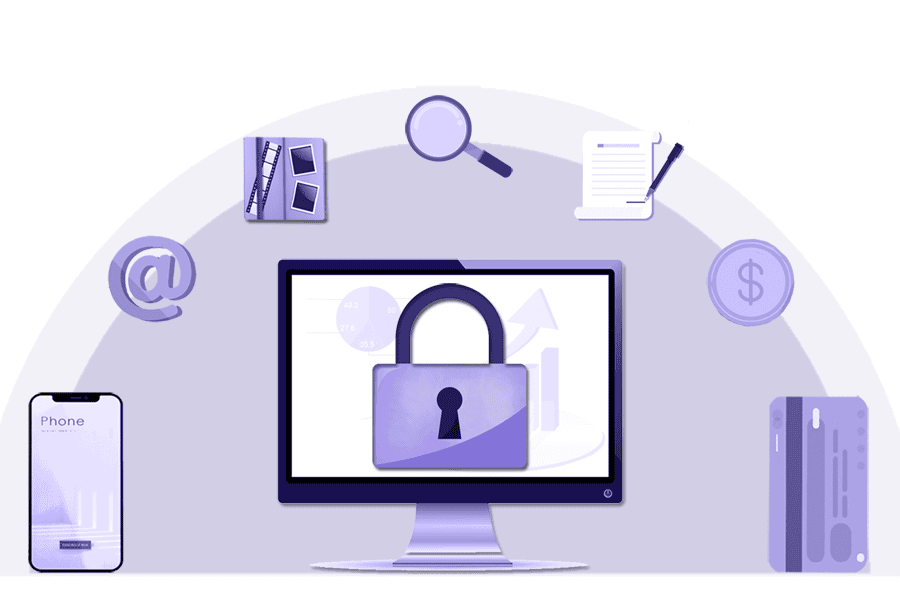What Is a Reverse Proxy: All You Need to Know
Proxy fundamentals

Vilius Dumcius
We already know proxies act as intermediaries between a user and the internet. Every request you make first goes through a proxy server before moving on to the internet. It’s an added security layer that keeps your IP address private by replacing it with another one. This way, a proxy ensures that a website or service never directly communicates with a specific user.
But what is a reverse proxy? Simply put, reverse proxies perform the same function but on the server’s side. They ensure a client never communicates with your server or service directly.
The crucial difference between these two types of proxies is their purpose. A user will utilize a residential proxy server to increase their privacy, avoid geo-blocking, and much more. On the other hand, web servers employ a reverse proxy to improve protection against attacks, caching, encryption, etc. Today we’ll talk about reverse proxies and what they can do for you.
What Is a Reverse Proxy Server
In short, a proxy server gets implemented in front of web servers to direct traffic to a specific back-end server. It acts as a network traffic cop, handling policy management as well as traffic routing. This practice significantly improves security and performance by preventing overloading.
Watch this video to learn more about reverse proxies:
5 Reasons Why You Should Use a Reverse Proxy Server
We already mentioned improved web server security and performance. However, that’s not all. Here are some of the key benefits a reverse proxy server brings to the table:
1. Content caching
Reverse proxies are located in different geographical locations, holding compressed and cached mirror versions of website pages. This improves content delivery speed based on the client’s location and helps minimize page loading time, thus improving the client’s experience.
For example, let’s say we have a user in Europe visiting a website that utilizes reverse proxies with servers in the United States. If this is the case, the user will connect to a regional reverse proxy server in the EU. The proxy then interacts with the server in the United States.
The reverse proxy will store the response data and serve it to other users coming to the site from Europe. The website’s performance will significantly improve since this data is stored locally and delivered without any interaction with the USA server.
2. Load balancing
Since a reverse proxy server creates a gateway between the users and the origin server, they have the ability to determine where to route each HTTP session. If an application is using several back-end servers, the reverse proxy server can distribute that load efficiently. This improves the overall user experience, ensuring high availability at all times.
In case of high traffic, reverse proxy servers can distribute it evenly across different servers and prevent overloading. Finally, if a server goes offline for whatever reason, a reverse proxy offers a fantastic failover solution as it reroutes traffic and ensures continuous website or service availability.

3. IP masking
When all your incoming traffic goes through a reverse proxy server, it first terminates each connection and initiates a new one with the back-end server. As a result, each user request gets resolved by the proxy IP, which keeps your server’s IP masked.
This practice makes all types of direct-to-IP attacks (like DDoS) significantly more difficult, if not impossible. Just like with standard proxies, this offers an additional protection layer for your infrastructure.
4. Scrubbing
Since a reverse proxy comes in front of your servers, it can efficiently scrub all incoming app traffic before sending it to the back-end. Again, this improves DDoS protection and deflates its impact. More importantly, you can greatly increase your web application security as well by placing a web app firewall to recognize and isolate any malicious packets, including hacker requests and bots.
5. Encryption
Encryption and decryption of the Secure Sockets Layer (or SSL) communication for every single user can be inefficient for an origin server, especially if you’re dealing with massive traffic. This is where a reverse proxy server can help by dealing with encryption and decryption for every request.
How Secure are Reverse Proxies?
As stated above, a reverse proxy sits between the clients and your web server, preventing them from direct access to your network infrastructure. Any additional layer that keeps your infrastructure as protected as possible allows fewer chances for problems and less traction for any unwanted visitors against your essential data.
How to Utilize a Reverse Proxy Server?
You have two options when it comes to utilizing a reverse proxy in your infrastructure. Certain businesses set up and implement their own servers. While it requires specific knowledge, resources, and investments in hardware, the in-house method allows tailoring the reverse proxy solution to your particular needs and usage scenarios.
The other, significantly simpler option is utilizing a trusted reverse proxy service that guarantees top quality and uncompromising security for your network infrastructure. If you decide to take this path, you won’t have to deal with management, and you don’t have to worry about the complex engineering knowledge necessary to keep everything running smoothly.

What a Reverse Proxy Server CAN’T Do?
We’ve established the capabilities and usage scenarios where reverse proxies can come in handy. For the sake of clarity, let’s go over what it does not do.
1. It doesn’t offer 100% security
The most important thing to clarify is that a reverse proxy server does not warrant 100% immunity to any outside attack . While it does add an extra protective layer to your infrastructure, there’s always a chance a creative hacker will somehow find a way to bypass all security measures you have in place.
2. It doesn’t guarantee 100% stability
While a reverse proxy server helps ensure load balancing, it’s not a load balancer per se. The two concepts do sound similar. A reverse proxy server does take all client requests and forwards them to the back-end servers. Since it acts as an intermediary between these two entities, it does prevent overload.
However, a load balancer allocates this traffic to optimally utilize each server’s capabilities. While these two concepts are not the same thing, particular reverse proxies could also be capable of taking on the duties of a load balancer.
Final Thoughts
If your website, app, or service has many visitors on a daily basis, utilizing a reverse proxy server would definitely help you make sure everything runs smoothly. They offer numerous benefits, including load balancing, increased security against attacks, caching , and encryption, so they’re a valuable part of any network toolbox.
If you lack the know-how and the resources to create your own, make sure you choose a reliable service that provides quality solutions and around-the-clock support.


